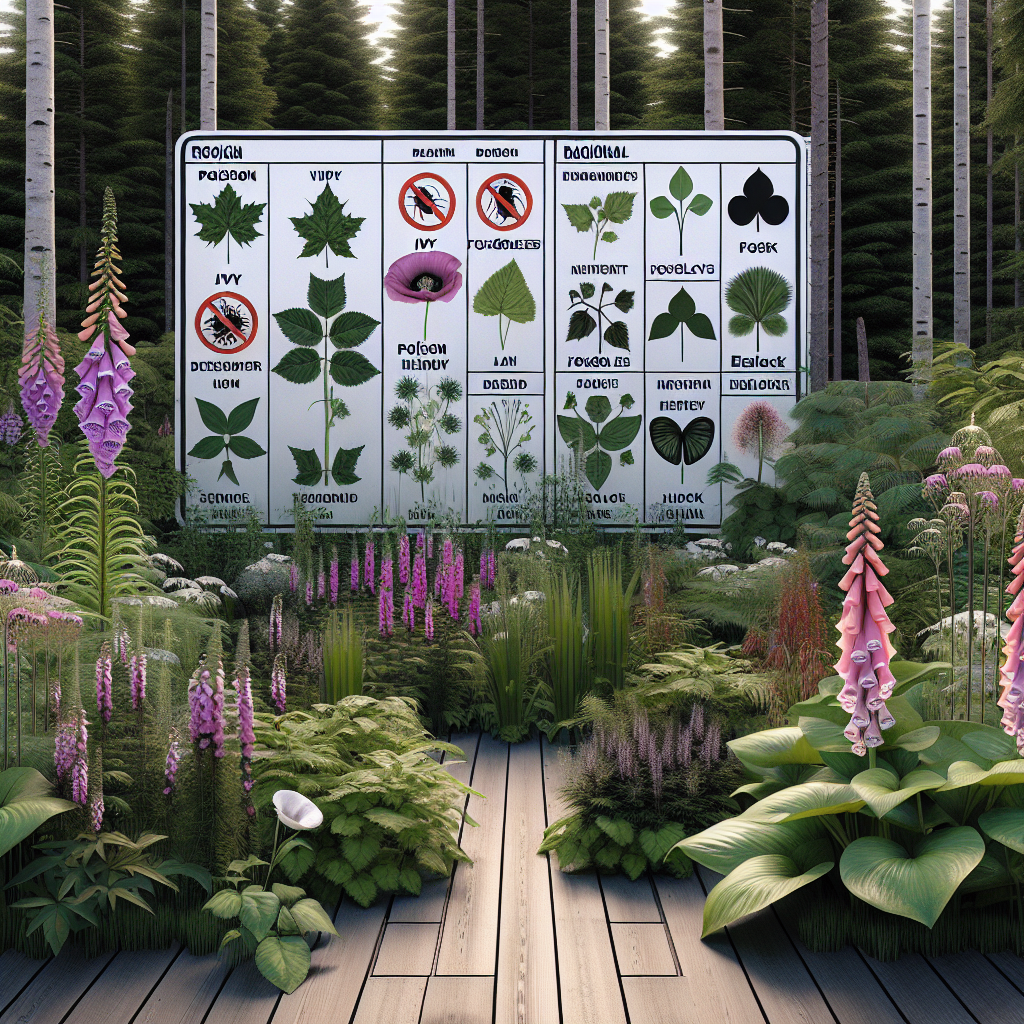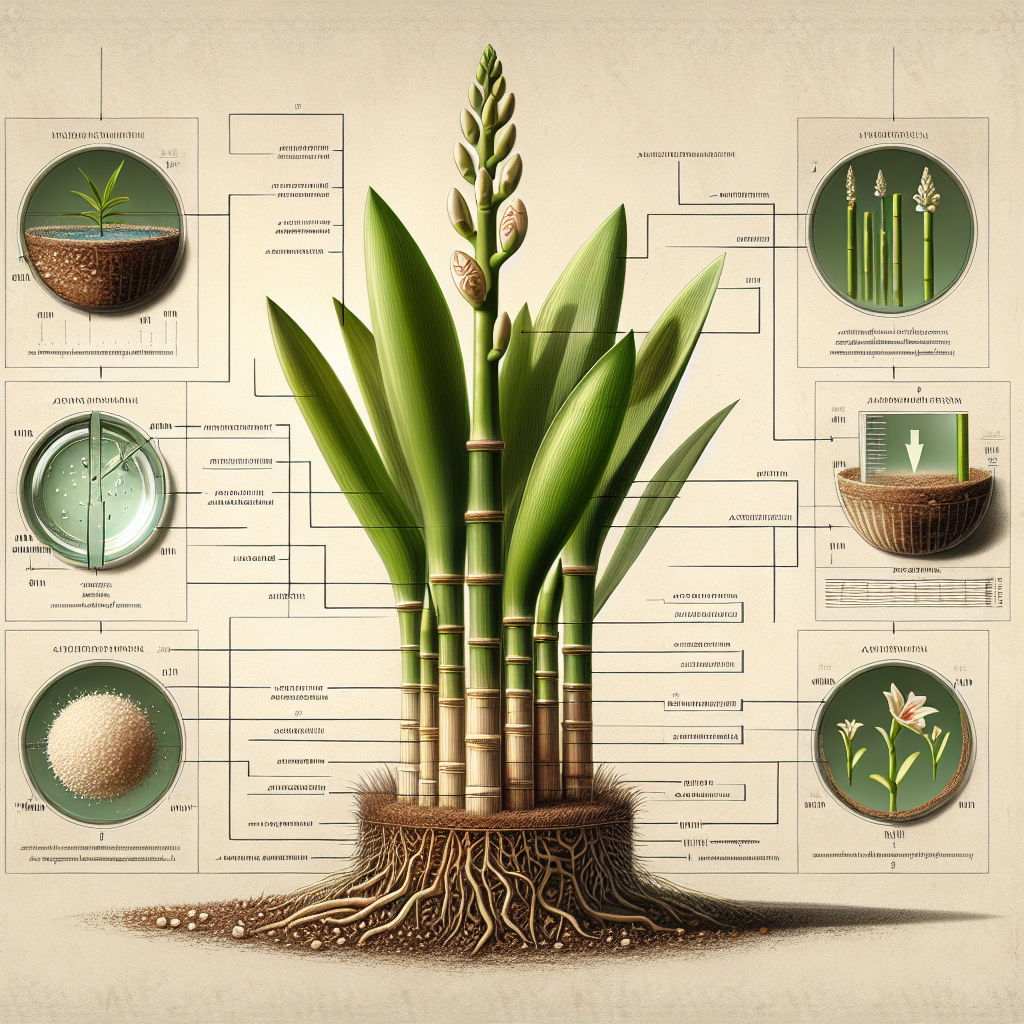North Dakota’s Garden Warnings: Plants to Be Wary Of
Updated June 29, 2024 at 6:18 pm

Understanding North Dakota’s Flora: A Gardener’s Guide
- Pet Friendly: Varies depending on plant species; always verify before planting.
- Light Requirements: Varies from full sun to shade; research individual plants for specifics.
- Watering: Adjust watering needs based on the native habitat of the plant; some require more, others less.
- Humidity: Typically low; adjust care for humidity-loving plants.
- Temperature: Can withstand temperature extremes; some plants require winter protection.
- Difficulty: Varies; includes both beginner-friendly and expert-level plants.
Whether you’re a seasoned gardener or just starting to dig your hands into the nurturing soil of North Dakota, understanding the local flora is essential. Each plant comes with its own set of requirements and cautions, which can greatly affect your gardening success. Here, we delve into some of the plants to be cautious of when gardening in the Peace Garden State.
Avoiding Common Yet Harmful Plants
In North Dakota, a few ordinary-looking plants can pose significant risks to humans, pets, and local wildlife. Being familiar with these potentially harmful plants is essential for any gardener or outdoor enthusiast:
Poison Ivy (Toxicodendron radicans): Often found climbing trees or spreading on the ground, this plant is renowned for causing severe allergic skin reactions. Its leaves come in clusters of three, and it may have whitish berries.
Find This and More on Amazon
What To Do If You Touch Poison Ivy?
If you accidentally come into contact with poison ivy, it’s crucial to wash the area with soap and water immediately. There are several products available that help alleviate the symptoms:
One such product is Tecnu Original Outdoor Skin Cleanser. Based on substantial positive reviews, Tecnu is known for being effective in removing the plant’s oil, urushiol, which causes the reaction.
Pros
- Can prevent rash if used within 8 hours of exposure
- Can be used on contaminated clothing and tools
Cons
- Must be used quickly after exposure for best results
- Some individuals may find the cleanser to be harsh on the skin
Plants With Toxic Berries and Foliage
North Dakota is also home to plants that have alluring berries or foliage but are toxic when ingested. Some notable examples include:
Pokeweed (Phytolacca americana): Pokeweed can grow quite large and produces dark purple berries. Though some parts are used in traditional cooking, it is essential to prepare them correctly, as the plant is highly toxic.
Recognizing Pokeweed and Safe Alternatives
Identifiable by its reddish-purple stems and white flowers, pokeweed appears appealing but requires caution. Instead, consider planting non-toxic berry-producing plants, like serviceberry or winterberry, that provide similar visual appeal without the hazard.
Managing Invasive Plant Species
Invasive plants pose a different kind of threat to North Dakota gardens by crowding out native species and disrupting ecosystems. One such plant is Leafy Spurge (Euphorbia esula), a perennial that releases a milky sap contributing to skin irritation and possibly severe eye damage if contact is made.
Dealing with Leafy Spurge in Your Garden
If Leafy Spurge has taken root in your garden, it requires immediate attention. The key is to prevent it from setting seed, as its seeds can remain viable in the soil for years to come. Mechanical removal can be tough, as it regenerates from its extensive root system.
One effective solution is the use of herbicides. After researching various products, many gardeners recommend Tordon Herbicide, a powerful option for controlling Leafy Spurge. Despite the potential environmental impacts of using herbicides, Tordon is noted for its efficiency when applied correctly and in accordance with the label instructions.
Pros
- Efficacy in killing deep roots to prevent regrowth
- Long-lasting control of invasive weeds
Cons
- Non-selective, may harm desirable plants if not carefully used
- Potential environmental impact requires responsible use
Find This and More on Amazon
The Hidden Dangers of Wild Parsnip
Beware the Wild Parsnip (Pastinaca sativa), an innocent-looking plant that can cause severe burns through phytophotodermatitis. This reaction occurs when the plant’s sap comes into contact with the skin and is then exposed to sunlight.
Its yellow flowers and resemblance to celery may mislead some, but gardeners need to handle this plant with extreme caution. Personal protective gear, such as gloves and long sleeves, is recommended when handling Wild Parsnip to avoid any sap contact with the skin.
Natural Solutions for Safer Gardens
Instead of reaching out for chemical treatments, some gardeners might prefer natural solutions like botanical oils and vinegar-based products. These items can deter or even kill unwanted plants without adding synthetic chemicals to the environment.
One of such natural products is Green Gobbler Vinegar Weed & Grass Killer, an organic herbicide made from ethanol-distilled corn grain vinegar. It is lauded for being non-toxic and safe around pets and children, making it an excellent choice for thoughtful gardeners.
Pros
- Eco-friendly and bio-degradable
- Safe to use around pets and children
Cons
- May require multiple applications for full efficacy
- Might not be as immediately potent as synthetic herbicides
Ideal Native Plants for North Dakota Gardens
While there are plants to be cautious of, North Dakota boasts a variety of natives that are well-suited to the local climate and soils. By choosing species native to the region like Coneflower (Echinacea spp.) or Black-eyed Susan (Rudbeckia hirta), you’re promoting local biodiversity and reducing the need for extensive maintenance.
Native plants are adapted to weather the local conditions, often requiring less water and no fertilization. They can enrich your garden experience by attracting native birds and beneficial insects, contributing further to ecological balance.
Challenges and Joy of Gardening in North Dakota
Gardening in North Dakota comes with unique challenges, from the cold winters to the scorching summers. Despite this, there is a great joy in nurturing a garden that flourishes under such conditions. By understanding the plants to be wary of and choosing suitable species, gardeners can create safe and vibrant green spaces.
Whether it’s avoiding contact with Poison Ivy or choosing the right herbicides for invasive species, knowledge and care go a long way. And in doing so, you contribute not only to your own well-being but also to the health of the surrounding ecosystem—making your gardening practices a true act of peace and conservation.
Enhancing Safety and Enjoyment With Pet-Friendly Plant Choices
As a gardener, creating a sanctuary not just for you but also for your furry friends is of the essence. Consider pet-friendly options that are non-toxic and safe, such as Sunflowers (Helianthus annuus) and Marigolds (Tagetes), both of which can add vibrant colors to your garden without the worry.
Especially when our furry friends love to explore, choosing pet-friendly plants can save you a lot of stress. Ensure that you verify the safety of each plant, as some can be deceptively dangerous, like the common Sago Palm, which is toxic to pets.
Creating a Low Maintenance Garden With Drought-Tolerant Plants
North Dakota’s climate can be demanding for gardeners due to its periods of drought. To create a low-maintenance garden, it’s strategic to select drought-tolerant plants, such as Yarrow (Achillea millefolium) or Sedum (Sedum spp.), which thrive with minimal watering.
By choosing such resilient plants, you save on water consumption and can enjoy a thriving garden even in the driest months. Moreover, these plants typically require less care, freeing up your time to enjoy your garden rather than constantly tending to it.
Seasonal Gardening: Preparing Plants for North Dakota Winters
Preparing for the harsh North Dakota winters is a critical step in ensuring your garden can bounce back in the spring. Hardy perennials like the stunning Snowdrop (Galanthus nivalis) and Russian Sage (Perovskia atriplicifolia) are excellent choices for cold winters.
It’s also essential to apply mulch and consider winter coverings for plants that are less tolerant of the cold. By taking these preventive measures, you give your plants a fighting chance against the freezing temperatures, and you’ll be rewarded with their revival in warmer seasons.
Embracing Indigenous Planting for Sustainability
Emphasizing indigenous plants such as the Prairie Coneflower (Ratibida columnifera) not only adds natural beauty to your garden but also encourages ecological sustainability. These plants have evolved to thrive in North Dakota’s specific conditions and offer habitats for local wildlife.
By selecting native plants, you reduce the necessity for pesticides and fertilizers, promoting a more organic approach to gardening. This practice not only benefits the environment but also reduces your gardening costs and workload in the long run.
Mitigating Risks: Choosing the Right Tools and Gear
When dealing with potentially harmful plants, using the right tools and gear can mitigate risks. For instance, sturdy gloves can prevent skin contact with irritants, and long-sleeved shirts and pants can shield against abrasions and sap.
Investing in quality tools such as pruning shears from reputable brands like Fiskars can also help you maintain control and safety in your garden. These tools are designed to provide an efficient cutting experience, reducing the chances of accidents and strain.
Sharing Knowledge: Joining Local Gardening Communities
Joining a local gardening community can be incredibly beneficial. Not only do you get to share and receive advice on dealing with specific North Dakota plants, but you also become part of a network that can offer support and camaraderie.
Local gardening clubs or online forums are great places to start. They can be a treasure trove of information on regional gardening challenges and successes, connecting you with gardeners who understand the local flora and fauna inside out.
Continuing Education: Learning About Horticulture
To further your gardening knowledge and expertise, consider engaging in horticulture education. Whether through local workshops, online courses, or books, continued learning helps you make informed decisions about your garden.
Consider authors like Douglas Tallamy, who emphasizes the importance of native planting in books like “Bringing Nature Home.” Such resources can provide deep insights and inspire you to create a garden that’s not only beautiful but also supportive of the local ecosystem.
Overall, the journey of gardening in North Dakota is a rewarding experience that deserves thoughtful planning and consideration.
Selecting the right plants, preparing for the seasons, and learning more about local horticulture are crucial steps in crafting a garden that is both beautiful and beneficial. By being mindful of hazardous plants and focusing on eco-friendly and sustainable practices, you create not just a garden but a natural haven that supports the local wildlife and brings joy to all who visit it.
Whether you are an experienced gardener or a beginner, the timeless delight of sowing seeds and nurturing their growth is an adventure that speaks to the heart of our connection with nature. With a spirit of curiosity and care, the gardens of North Dakota can become a profound source of beauty, peace, and ecological sanctuary.
Shop more on Amazon

